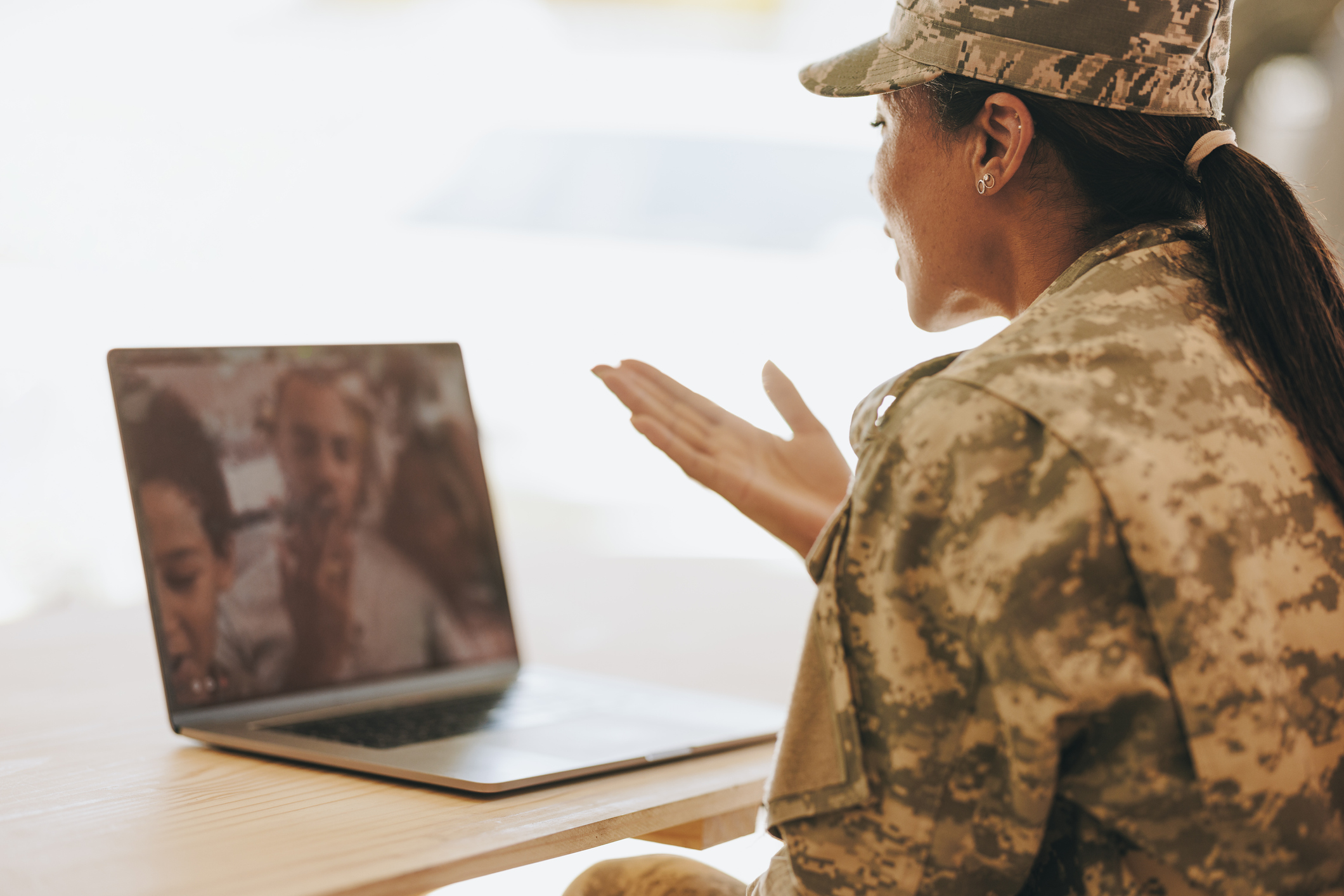By: Leanne Knobloch, Ph.D
Throughout history, military families have worked hard to stay connected during deployment. During prior conflicts, service members and their loved ones relied on the mail to stay in touch, often waiting eagerly for a letter that would be months old when it arrived (if it came at all). Clever correspondents numbered the envelopes so the recipients could read the letters in the correct order. A lucky few enjoyed brief but expensive long-distance phone calls.
Advances in technology have given today’s military families many more options. Depending on where service members are deployed, they may have secure and reliable Internet access for email, social media, and video chat such as Skype and FaceTime. They may have cellular service for phone calls and texts. More and more military families are able to bridge the gap between overseas and home by interacting in real time, with privacy, and for reasonable cost.
Despite the benefits of new technology, today’s military families still face challenging dilemmas about how best to stay in touch. How much connectedness is too much? What if family members have vastly different preferences for frequency and/or channel? Should loved ones at home discuss difficulties that could distract the service member from his or her mission? Should military personnel disclose problems that could worry family members?
Even the communication technologies themselves pose risks. What precautions should military families take to preserve operational security? How should they ensure privacy? And what happens if connectivity suddenly “goes dark” because of mission requirements?
A recent study sheds light on how the communication of military couples during deployment affects their anxiety after homecoming. Dr. Leanne Knobloch from the University of Illinois, Dr. Lynne Knobloch-Fedders from Marquette University, and Dr. Jeremy Yorgason from Brigham Young University conducted a study in which 555 military couples (1,100 individuals) from all military branches completed online questionnaires once per month for the first eight months after reunion. The study was funded by the Congressionally Directed Medical Research Programs through the Military Operational Medicine Research Program.
Email was the most frequently used channel of communication, followed by Facebook, instant messaging, video chat/Skype, phone, and cards and letters. The channels of communication used by deployed service members and at-home partners, however, mattered less than the tone of their exchanges.
Military couples who communicated positively during deployment (and avoided communicating negatively during deployment) reported less anxiety at homecoming. In other words, constructive communication during deployment was helpful upon reunion.
Another key finding was that both positive and negative communication during deployment predicted a quicker reduction in anxiety over time after reunion. These results suggest that military couples who confronted challenging topics immediately during deployment adjusted more quickly after homecoming.
The study implies three tips for helping military couples stay in touch during deployment:
1. Plan ahead. Talk in advance about how much and how often you would like to communicate during deployment. Don’t forget to discuss what channels each person prefers to use. But, remember that your access and preferences may change during deployment, so revisit your plans occasionally to make sure that everyone is comfortable with how your communication is going.
2. Interact constructively. As much as possible, stay upbeat and cheerful when communicating during deployment. Even challenging issues can be worked through effectively if you keep a positive tone.
3. Don’t sidestep important issues. Sweeping hard topics under the rug means a pile-up upon reunion. Stay positive and work to see things from your partner’s perspective. Even agreeing to dig deeper into a topic once everyone is physically together is better than ignoring problems.
The project also suggests a pair of guidelines for how military family service providers can support individuals separated by deployment:
1. Help military families plan. Service providers can assist military families in thinking through the advantages and disadvantages of the communication channels available during deployment. They also can support military families in developing a plan for how to stay in touch during the time apart.
2. Offer timely assistance. Support resources should be tailored to the stage of the deployment cycle for maximum effectiveness. Military families may benefit from communication skills training before and during deployment to learn how to stay connected across the miles. Interventions targeting anxiety may be useful immediately before or at homecoming because that’s when people reported the most anxiety.
Source: Knobloch, L. K., Knobloch-Fedders, L. M., & Yorgason, J. B. (2018). Communication of military couples during deployment predicting generalized anxiety upon reunion. Journal of Family Psychology, 32, 12-21.
A Podcast Episode with Dr. Leanne Knobloch: Staying Connected During Deployment, 2019
 Leanne K. Knobloch (Ph.D., University of Wisconsin – Madison) is a professor in the Department of Communication at the University of Illinois. Her research examines how people communicate during times of transition, including how military families navigate the deployment cycle and how romantic couples cope with depression. Her work has been honored by the Golden Anniversary Monograph Award from the National Communication Association, the Biennial Article Award from the International Association for Relationship Research, and the University Scholar Award from the University of Illinois.
Leanne K. Knobloch (Ph.D., University of Wisconsin – Madison) is a professor in the Department of Communication at the University of Illinois. Her research examines how people communicate during times of transition, including how military families navigate the deployment cycle and how romantic couples cope with depression. Her work has been honored by the Golden Anniversary Monograph Award from the National Communication Association, the Biennial Article Award from the International Association for Relationship Research, and the University Scholar Award from the University of Illinois.















